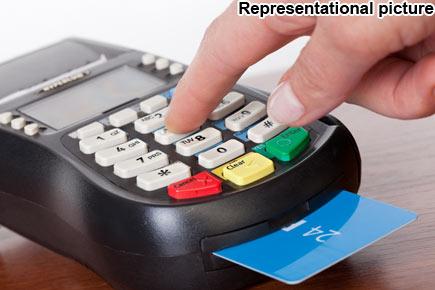Do you remember when you last carried a wallet stuffed with cash? Ours is an age where we do not even need to be physically present to complete a purchase. Technology has made our lives simplerand making payments easier

Do you remember when you last carried a wallet stuffed with cash? Ours is an age where we do not even need to be physically present to complete a purchase. Technology has made our lives simpler and making payments easier. So pervasive has been technology’s impact that even the smallest of businesses today are betting big on tech. So why should the education sector be left behind?
 Representational picture
Representational picture
ADVERTISEMENT
Technology and education
'Going cashless' has become the norm post-demonetisation. Virtually every sector has been active in assessing and adopting different forms of digital payments. Sectors like transport, entertainment, and retail have proactively adopted digital payment mechanisms even beyond the traditional credit and debit cards. The education sector, given its sheer size, can also be a huge driver of this cashless economy.
According to data from the Ministry of Human Resource Development Department of Higher Education, there are approximately 1.3 million schools in India. India is also the world’s largest higher education system with over 750 universities. These institutions represent a substantial financial footprint. ASSOCHAM estimates that the average cost of education in India for a single child in a private school is approximately Rs.1,25,000 per annum. The expenses for pre-school education are no less, amounting to anywhere from Rs. 35,000 to Rs. 75,000 a term. Modern schooling goes well beyond the traditional books and sports andthis means schools feel the need to charge many ad-hoc fees as well. Fees for campus development, school picnics, annual events, sports, transport, nutrition, and other extracurricular activities are quite commonplace.
The traditional modes of payments accepted by schools are cash, cheques or demand drafts drawn out in the name of the school. Another alternative is to deposit cash at the school-designated bank branches. These are all quite inconvenient for parents as they need to make a specific trip to complete the payments.
The challenges of education
The government has been imploring schools to be cashless for a while now. They have issued strict directives to CBSE schools to accept only online or non-cash modes of payments. They have also been asked to make wages and salaries and vendor payments through digital means. The value proposition is clear enough. Apart from the convenience to the fee-paying parents, the adoption of digital payments can help educational institutions address some pressing challenges such as:
>> High administrative costs to manage fees collections
>> Use of excel based or file based systems for calculation of fees and raising fee invoices increases resource burdens, is time consuming and also prone to errors.
>> Resource intensive, manual and error-prone reconciliations
>> Lack of a consolidated view of collections versus outstanding
>> Complexity of reporting
>> Lack of clarity of financial transactions owing to manual processes
The way to overcome these challenges
Given that the cost of non-compliance and financial errors can be huge, not just in terms of money but also in terms of social respect and trust, introducing and implementing digital payments should be a priority for this sector. This move would provide transparency, convenience, and efficiency while aiding the cashless economy. Additionally, making fee reports would become hassle as well as error-free, and would fuel greater transparency in revenue collections.
The good news is many schools have adopted technology in other spheres of their operations. Doing away with the excel based or file-based systems for calculation of fees and raising fee invoices and adopting technology and investing in automated fee management has now become quite feasible. There are several methods in which digital payments can be enabled in the education sector. Parents can make payments using cards, net banking, NEFTor the latest entrants like UPI and BharatQR.
Jose Thattil, CEO of Phi Commerce says, “Schools will benefit by investing in automating fee management process. Fee collection is the last leg of the overall fee management. Frictionless digital payments can be beneficial for both schools and parents as they enable easy, timely payments and make record keeping easier.For schools, this alleviates the burden of chasing payments, makes accounting and compliance easier and more manageable, reduces risks, drives efficiencies, and helps them focus on what matters the most – education."
Catch up on all the latest Mumbai, National and International news here
Download the new mid-day Android and iOS apps to get updates on all the latest and trending stories on the go
 Subscribe today by clicking the link and stay updated with the latest news!" Click here!
Subscribe today by clicking the link and stay updated with the latest news!" Click here!







